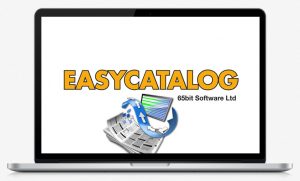

Confirm that the lock icon displays at the bottom left of the library panel. This wouldn’t work for the images, so I’d need another solution for that. With Easatalog, you just import your data into a panel and place them from there into your document, from manually up to fully automatically. Using my variable import script could work for the references, but I’d need to use a script to “flatten” them before exporting, and then undo that before saving. It seems to me that this would not be a very good fitģ.

I have no idea what potential road blocks there might be here.Ģ. Keep and edit the entire book in XML form, and let InDesign do the layout. The issues here are described very well here: (unfortunately I didn’t see this article till I’d finished my variable import script.)ġ. I can easily export my references and image data from the database, I planned to use GREP styles to format the reference data. Given my background in web development, I studied a bit on ExtendScript, and pulling from several scripts that are around, I made a script that will import text variables from a text file. These all seem to be centered on variable data printing (catalogs, personalized mailing, etc.) and while I can see making one or more of them work for my needs, they’re all very far from being made to do what I need.ģ.
#EASYCATALOG 2020 TRIAL#
Downloaded and worked with the trial version of: DataLinker, Eas圜atalog, InCatalog and InData. This obviously move it under the story’s node and broke it’s connection to the XML file.Ģ.
#EASYCATALOG 2020 HOW TO#
After reading about how to import XML data and maintain the link to the data file, I fantasized that I could just drag the data I wanted from the structure panel, to the spot in the text where it belonged. In a perfect world, I’d have a panel in InDesign with a list of all the image IDs and with a click the image and caption would be inserted to the document, I’d have another panel with a list of reference IDs that would have the same functionality.ġ. Winston.) All of the data for both the photos and references are currently being stored in a database. Aplico mi experiencia en el mundo de la producción a la consultoria. Me certifico en sus oficinas del Parque Tecnológico de Bizkaiai. Implantando un ERP pensado para la Industria RPS del grupo Ibermatica. So, here it is: I’ve got a book that has hundreds of photos (with captions) and over a thousand references (this kind of thing: Atkinson, J. Después de 11 años en el sector de la industria de la automoción decido pasar al sector de la consultoria. Not only does Socioh help you do this, we also import all your inventory information into this catalog-so that only products that are in stock show up in your Facebook shop.I have a use case where I’d like to use a bunch of data from a database, but I’m not seeing anyone online who’s done or is doing what I’m trying to do. Once you have connected your Business Manager to Socioh (remember to save it), all you need to import your product feed into Facebook is a catalog. Sign up to Socioh, select the correct Business Manager and you're ready to go, no need to bother with any other settings! Section 1: Create a catalog of all your products on Socioh If you already have one, Socioh will automatically detect and present it on the drop-down in your settings. First, you'll need a Facebook Business Manager. You can easily import your Etsy product feed (or Etsy listings), using Socioh's easy catalog setup-and all it'll take you is minutes! Sounds good? Let's get started. Vastaanota ajankohtaista informaatiota niin runsaasti kuin tarvitset käyttäen SQL:n voimaa. Wondering how to connect your Etsy store to Facebook to enable Facebook and Instagram shops? Yhdistä Eas圜atalog suoraan tietokantaasi meidän yleisellä ODBC datan tarjoajalla.


 0 kommentar(er)
0 kommentar(er)
